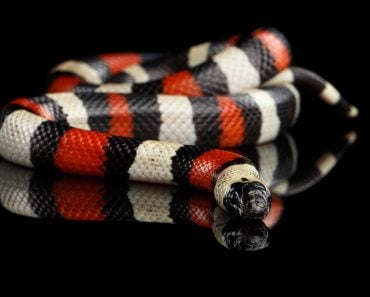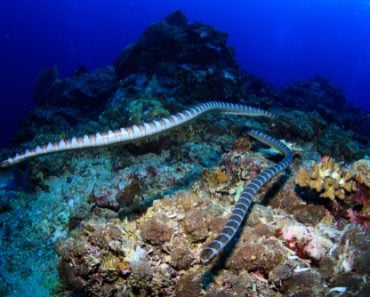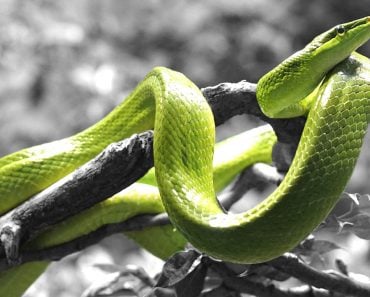The rattle of the rattlesnake is formed in hollow interlocked segments made up of keratin, the same material that constitutes a human nail. The segments fit loosely inside one another at the end of the serpent’s tail.
Imagine walking through a sweltering desert, a lone captive in the sea of sand. There’s no one around for miles. The sun shines on you mercilessly—like summer in Algiers—only worse. The only discernible sounds are of gusty winds and your feet shoveling the sand. Suddenly, you hear a startling sound nearby—a rattle.
Given how proficient rattlesnakes are at camouflage, you likely won’t be able to seek the source of this sound. However, you sense it sneaking up on you, lurking beneath the torrid sand in a coiled-up position with its head held high in the air. Panic sets in.
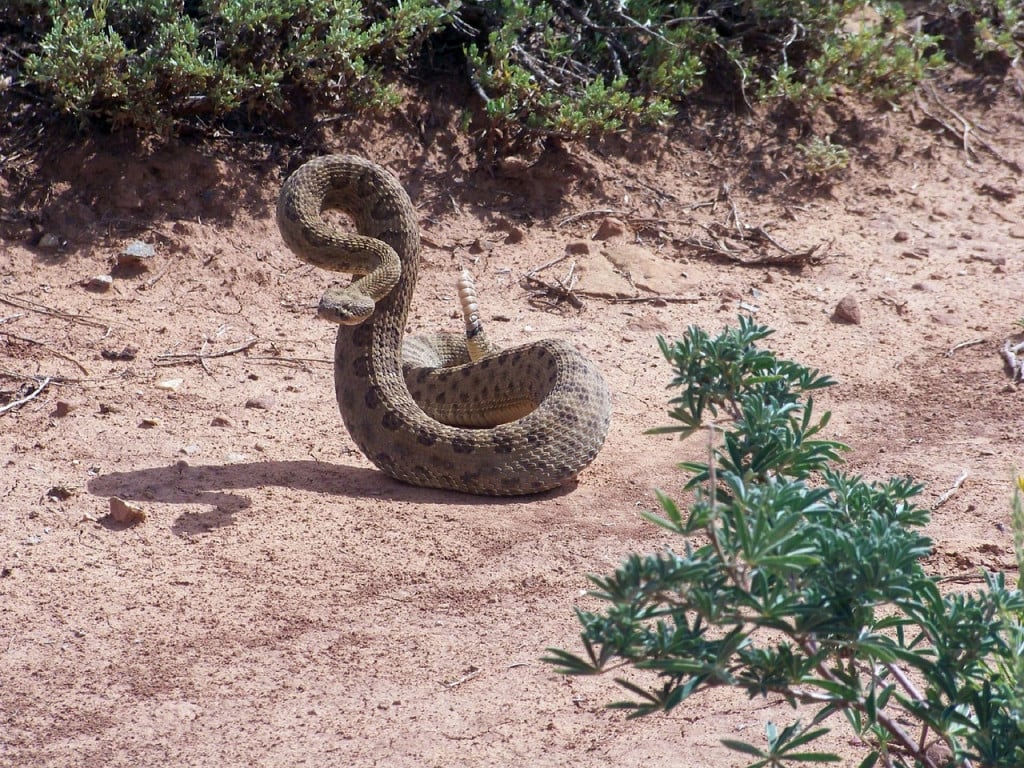
Rattlesnakes are large venomous snakes found throughout North and South America. There are more than 30 species of rattlesnakes in the world. Arizona houses 13 species of rattlesnakes alone, more than any other state. However, many rattlesnakes are in danger as human habitats are rapidly encroaching upon their territory. Unfortunately, many believe the only good rattlesnake is a dead rattlesnake. Rattlesnakes are being rounded up and killed in many parts of the US to keep their populations in check.
Besides the trademark hissing, rattlesnakes have an additional gesture that sends chills down the spine.
This distinctive feature, of course, is their namesake—their signature rattling.
Recommended Video for you:
How Do Rattlesnakes Get Their Rattle?
The rattle is at the tip of a rattlesnake’s tail. The rattling sound it makes resembles a maraca. So, does it work like a maraca? No.
The maraca’s sound results from tiny balls bouncing inside their case. The rattlesnake’s rattle, however, is hollow on the inside. The rattle is formed when segments of keratin—the same material as human fingernails—interlock. The segments are fitted loosely at the end of the serpent’s tail. The rattle produces a sound when the keratin segments click against one another.
As the snake erects its tail and vibrates its muscles, these segments collide to produce the recognizable rattling sound.
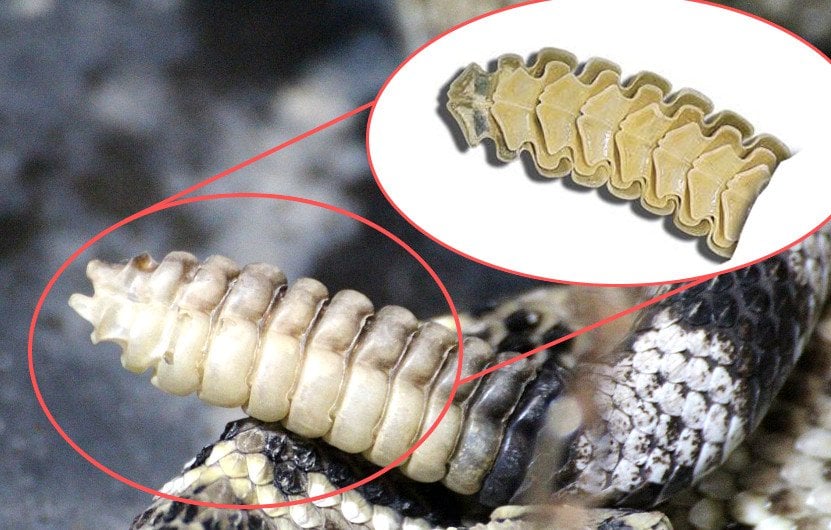
The sound waves bounce off the walls, generating a distinct amplified rattling sound. This is similar to the echo produced inside a cave. The bigger the cave (the hollower rings, in the case of a rattlesnake) the greater the amplification, i.e., the louder the echo (rattle).
How Do Rattlesnakes Rattle?
Now, this hollow chamber cannot get the job done alone. That’s where the powerful tail muscles come into the picture. Rattlesnakes have three powerful vibrating muscles: the supercostalis lateralis, iliocostalis, and longissum dorsi at the base of their spine.
As the snake starts to shake its tail, undulating waves travel down the length of the rattle. The rattling is so vigorous that these movements appear blurry to our naked eye. Using these muscles, they can shake their tails 50 to 100 times per second. Yes, PER SECOND! That’s twice as fast as the hummingbird’s wing muscles working when the bird is hovering.

It is one of the fastest muscle contractions observed in the wild, comparable to a hummingbird’s wings flapping. And rattlesnakes can keep this rattling going for a couple of hours! Kevin Conley, a zoologist at the University of Washington, has rightly quipped, “Rattlesnakes combine the speed of a sprinter with the endurance of a marathoner.“
Decoding The Physiology Behind Rattling
Despite vigorous rattling, this serpent expends only a fractional amount of energy. Perhaps that’s why rattlesnakes can unremittingly rattle for a few hours. Physiologist Stan Lindstedt, along with his team of researchers at Northern Arizona University, studied western diamondback rattlesnakes by placing them under an MRI (magnetic resonance imaging) scanner. They observed that the snakes spent surprisingly little energy per shake.
They postulated two reasons for this. First, the muscles exert only a small amount of force for crackling. Second, they don’t rely solely on oxygen for fuel. Although they couldn’t support their claims with incontrovertible evidence, they posited that rattlesnakes rattle not by contracting muscles on the side of the tail towards which the rattle moves but by using their muscles as a brake. In a way, it functions like a slingshot. The energy required for slowing down the muscle is stored as elastic potential energy (like a spring) and thus becomes available for movement in the opposite direction.
Baby Rattlesnakes Are Born Without Rattles
A rattlesnake is not blessed with this equipment from birth. Instead, these snakes are born with what is called a pre-button or first button—a single rigid segment of keratin. Snakelets, i.e., baby snakes, cannot rattle with this single-layered keratin chamber. It is only after the formation of the second and additional shells that the rattling becomes audible.
As the young snake sheds its skin after a few days, it also acquires a new button. The shells then successively increase each time it sheds its skin. These rattle rings keep adding over time, like Russian stacking dolls. Unfortunately, they cannot keep hold of these layers for very long. Being somewhat fragile by nature, rattlesnakes lose them in battles, have them bitten off by predators, or damage them while sliding down rocky paths. Rattles rarely make it past 10-12 rings before some layers start to break off.

Why Do Rattlesnakes Rattle?
The rattlesnake’s appearance inspires fear for many humans and animals alike. They are infamous for being venomous. A single bite from these serpents would typically put you on a hospital bed.
Biting is not the first resort for rattlesnakes. Their defense actually starts with rattling. Rattling is a loud warning that the serpent is unhappy with your presence in its vicinity. Rattling is the snake’s way of tacitly telling the intruder to retreat from its territory. The snake has evolved a highly sophisticated warning mechanism to caution enemies against approaching closer.
In fact, rattlesnakes are considered the newest and most evolved snakes in the reptile family.
The high-pitched rattle accentuates the snake’s petrifying hiss. Other than these complex mechanisms, rattlesnakes also coil their bodies and raise their head in the air to demonstrate resistance to intruders.
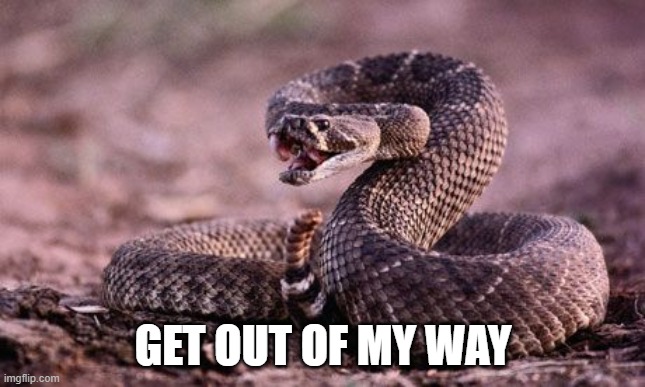
But there are exceptions to when the snake will rattle its tail. Rattlesnakes are ambush predators. For a successful hunt, they need to keep a low profile. Rattling would alert any prey nearby of their presence.
When they slither around, the snakes operate in silent mode. They activate this “mode” by holding up their rattle in the air so it does not come in contact with the ground or any other obstacles as it slithers on.
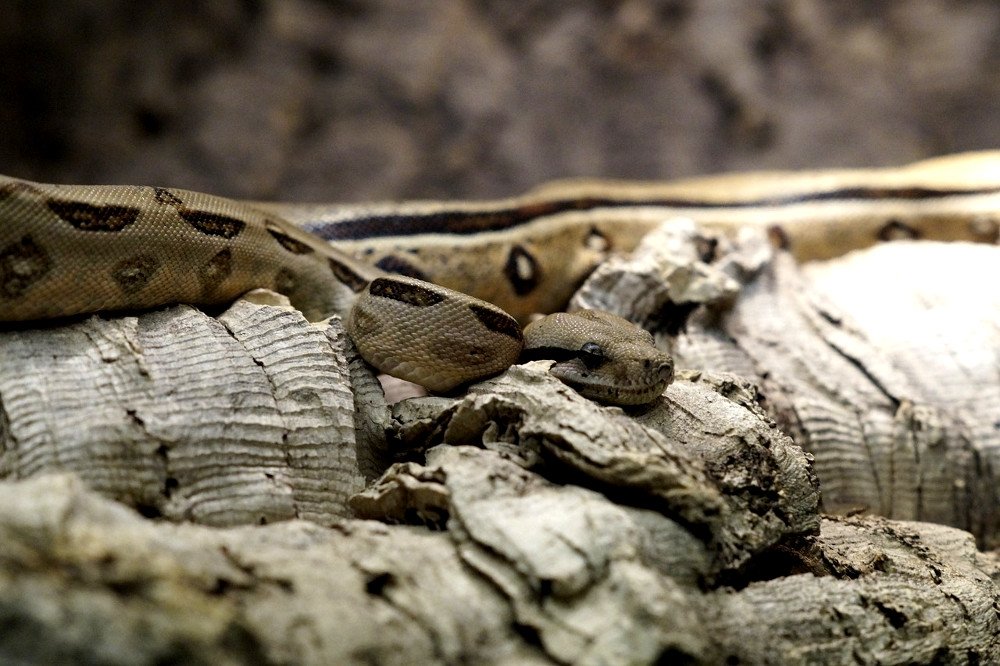
How Dangerous Are Rattlesnakes?
Rattlesnakes are also great at camouflage. As they often live in disguise to hunt prey, humans sometimes inadvertently end up stepping on them. Although rattlesnake bites are dangerous, the recorded fatality rate from their bites is quite low. With proper medical care, snakebites are normally cured, and patients can recuperate.
The venom of most rattlesnake species is mainly composed of hemotoxins, which impair the functioning of red blood cells (RBCs). The bite could result in internal bleeding, temporary muscle damage, and excruciating pain in the bitten area.
However, a few rattlesnake species, like Mojave and Speckled varieties, have even more potent venom. Their venom contains neurotoxins that target the nervous system. Symptoms of a neurotoxic bite are also more severe. It often impairs vision and makes it difficult to breathe and speak.
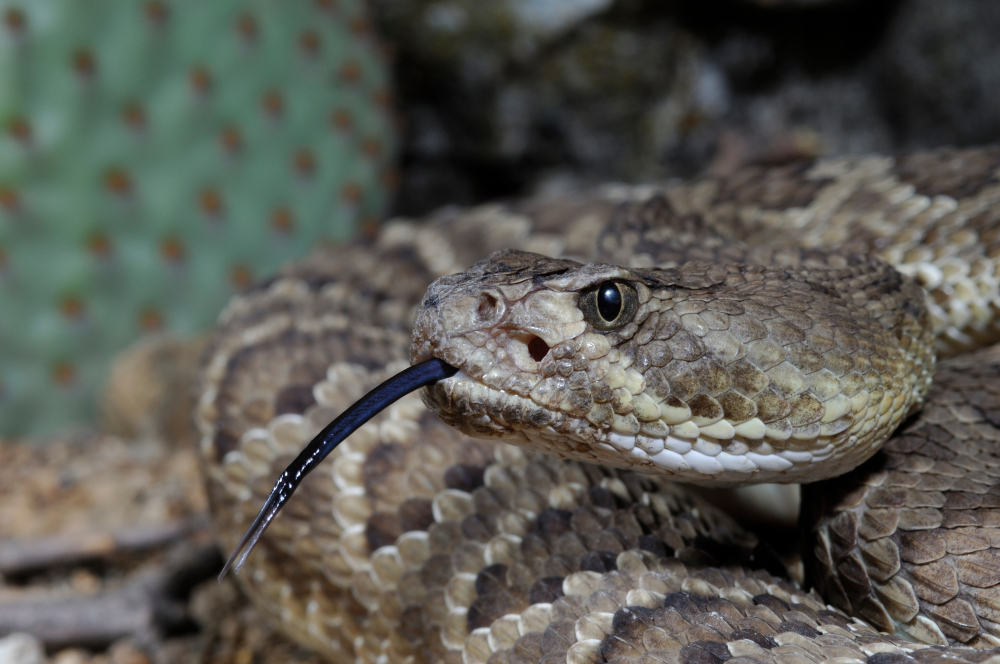
Thus, it is highly recommended to be alert when hiking, especially in regions like Arizona, where many species of rattlesnakes are found in abundance. Never attempt to kill a snake, no matter how small it is. And whenever you hear the rattle, it’s a clear sign to move away from the area.
If you get bitten by a rattlesnake, immediately rush to the nearest hospital. Never rely solely on basic home remedies. In the worst cases, such a decision could be fatal.
Last Updated By: Salama Yusuf
References (click to expand)
- Conley, K. E., & Lindstedt, S. L. (1996, September). Minimal cost per twitch in rattlesnake tail muscle. Nature. Springer Science and Business Media LLC.
- Rome, L. C., & Lindstedt, S. L. (1998, December). The Quest for Speed: Muscles Built for High-Frequency Contractions. Physiology. American Physiological Society.
- Savitzky, A. H., & Moon, B. R. (2008, June 13). Tail morphology in the Western Diamond‐backed rattlesnake, Crotalus atrox. Journal of Morphology. Wiley.
- How Rattlesnakes Rattle.



